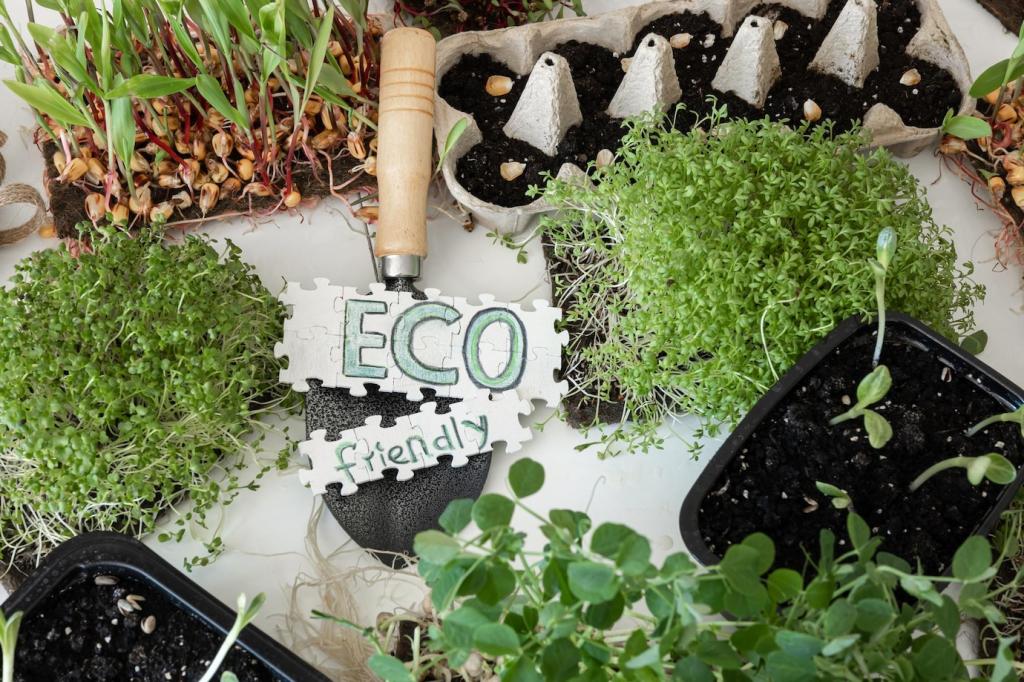Selecting Sustainable Furniture Materials
Chosen theme today: Selecting Sustainable Furniture Materials. Let’s make every chair, table, and sofa a small climate win without sacrificing beauty or comfort. Stay with us, share your questions, and subscribe for hands-on checklists, sourcing guides, and uplifting success stories.




Choosing Wood Wisely
Look for FSC or PEFC certification and an active chain-of-custody number, not vague claims like “responsibly sourced.” Ask retailers to show documentation. Many brands now offer QR codes linking to forest origins and mill data, making verification easier than ever.


Choosing Wood Wisely
Reclaimed beams, school gym flooring, and urban trees felled by storms become distinctive tabletops with history. Nail holes and patina tell stories while diverting material from landfills. Ensure kiln-drying for stability and proper moisture content to prevent cracks and cupping.
Metals, Glass, and Engineered Panels
Prefer high recycled content and durable powder-coated finishes. Steel is endlessly recyclable, and aluminum reduces weight for easier moving. A quick magnet test identifies steel frames; thin-walled tubes can be strong yet light, cutting shipping emissions without compromising stability.
Metals, Glass, and Engineered Panels
Tempered glass resists impact, while recycled-glass terrazzo offers character and circularity. Ceramic table tiles stand up to hot mugs and messy projects. Edge protectors reduce chips, and modestly tinted glass hides fingerprints without dulling the room’s brightness.


Linen, hemp, and wool regulate temperature, resist odors, and age gracefully. Seek OEKO-TEX Standard 100 or GOTS certifications to avoid unnecessary chemicals. Wool’s natural lanolin resists stains, while hemp’s strength means fewer repairs and a tougher everyday cushion life.
Fabrics, Foams, and Fillings
Natural latex (GOLS-certified) offers resilient support; recycled PET fiberfill closes the loop on bottles; responsibly sourced down adds plushness. Avoid PFAS-coated textiles when possible. We swapped crushed foam for latex cores once, and the sofa felt newly energized.
Fabrics, Foams, and Fillings
Adhesives, Finishes, and Low-VOC Choices
Finishes that respect your lungs
Favor waterborne polyurethane, plant-based oils, or hardwax finishes with low VOC ratings. Allow proper curing time; fresh finishes need ventilation. The simple sniff test helps—if it still smells like a workshop, give it air before family movie night.
Formaldehyde savvy
Choose formaldehyde-free or ultra-low-emitting cores and verified labels like Greenguard Gold. Ask for technical data sheets. For tight budgets, sealed edges and back panels significantly reduce off-gassing, especially in dressers, media consoles, or built-in storage walls.
Repair beats replacement
Spot-sanding and re-oiling a tabletop turns scratches into character rather than waste. I refreshed a thrifted maple desk over lunch with hardwax oil and a cloth, saving money while extending its life another decade or more.

Built to Last, Easy to Repair
Stronger joinery, fewer squeaks
Look for mortise-and-tenon joints, dovetails, dowels, or well-sized screws. Avoid flimsy staples at stress points. Quality knock-down fittings make moving easier and safer without wobble. If it creaks in the showroom, imagine apartment stairs on moving day.
Standard parts and open hardware
Prefer M6 or M8 bolts, common hex keys, and replaceable slats or webbing. Ask whether hinges, glides, and feet are replaceable. Brands that publish part numbers show they expect repairs, not replacements, when something finally loosens or wears.
Maintenance rituals anyone can keep
Every season, tighten screws, check felt pads, and feed thirsty wood with a light wax or oil. Ten minutes preserves alignment, prevents wobbles, and keeps finishes resilient. Add a calendar reminder and turn it into a quick, satisfying habit.
Smart Shopping and Community Tips

Start with what you have
Audit each room, repair before replacing, and consider refinishing or new hardware. Shop secondhand, but inspect frames, odors, and joinery carefully. Measure twice, buy once, and remember delivery paths—tight corners can be the enemy of good intentions.

Decode labels and claims
Ask for EPDs, LCAs, and recycled-content percentages. Clarify “carbon neutral” claims: real reductions beat offsets. If a label sounds impressive but vague, request documentation. Responsible brands answer clearly and happily because transparency is part of their design DNA.

Join the conversation
Share photos of your sustainable finds, ask tough questions, and help others evaluate materials. Comment below, tell us what you’re comparing, and subscribe for weekly checklists, sourcing directories, and seasonal care reminders tailored to real homes and real budgets.
